Don't wanna be here? Send us removal request.
Text
Rituals
There is so much joy in the coffee I buy myself every morning at the university campus. It has become my ritual. I walk into my office, set up my laptop, I connect the cable to the larger screen, I plug in my power socket and open up all the necessary files. I have probably decided on my walk into work what I will focus on for the morning session and so I enlarge the document on my secondary screen. I come eye to eye with my work. The letters magnified, my arguments have nowhere to hide on the screen that doubles the size of my thesis. I then prepare some water to drink. I always have to have a large drink of water after my coffee to wash away some of the bitterness left over. I pick up my phone, my keys and head down. In winter I have to make calculations on my route to ensure my coffee stays hot. I can either take the lift down and walk outdoors to the next building or I cross the covered bridge. But today the weather is warm, although raining somewhat. My laziness is also an important factor on what route to take. I choose the lift.
I use this time between my office and the canteen to check my WhatsApp, my family are usually commuting at this time and pretty chatty. I check the Guardian, cinema listings, and back to WhatsApp. It's my turn and they already know my order, the English girl with the single shot cortado. Anything more than a single shot and I would mentally implode. The cortado is my mother's coffee choice. She likes her coffees hot, short and served in a glass. I think about her every morning as I wait for my order.
I take my coffee and begin the sprint back to my office, shielding my coffee from the elements. I dare not take a sip before I reach my desk. The joy is in the writing and drinking. I enter the building, take the lift and reach the 5th floor. I enter my office, throw my keys down, switch my phone off, sometimes. I sit at my desk, pour in half a sachet of brown sugar and stir it in. I face my laptop and take my first sip of coffee. The experience is euphoric. This is no understatement. The smell, the taste and the heat work together to sink me deeper into my seat. I take a sip at a time as I type. My treat after a gruelling 30 words. I sip again. I try to take short sips so that it lasts longer. Then, the temperature of the coffee drops and I am at my final sip. I have finished my coffee. I keep typing and every now and then pick up my glass to make sure it's really finished. I begin to gulp my water down, grateful to have my thirst quenched. The beauty of the cortado is that it is just enough. Not too little and not too much. To order a second would border on the decadent. The second coffee would almost ruin the first. It is my one coffee of the day, hot milk after lunch churns my stomach. No, one, is perfectly enough and there is much work to do.
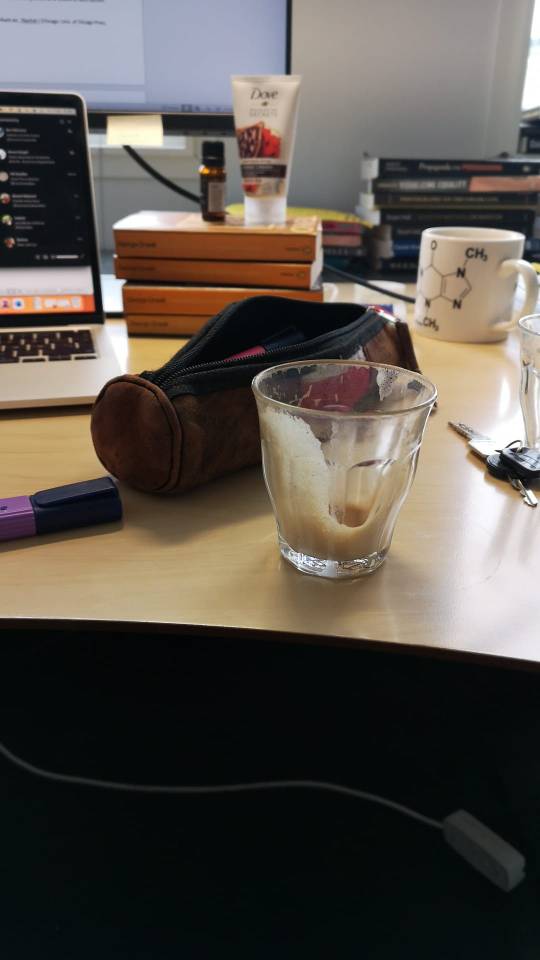
0 notes
Text
Hindsight. Or "When an archive doesn't give what it's supposed to gave"
When I was younger, I remember vividly a television advert that absolutely no one else remembers seeing. I can’t tell you why it stuck in my head all these years. I like to romanticise that the viewing of this TV advert informed my young mind at such an early age that it was inevitable that it would become the subject of my Ph.D. topic. The TV advert featured popular celebrities at the time, the only two that I remember are Mel B aka Scary Spice, and the former TV presenter Gail Porter. Each celebrity would spin around and morph into a different race posing a question to the audience. From what I remember Mel B asked if she would still be scary spice if she were white, appearing almost albino white, her bouncy curls straightening and dropping down onto her shoulders. I cannot remember what race Gail Porter changed into, but I do remember her asking “Would I still be cheeky?”. I do not know what I thought of this advert at the time, I only remember seeing it once. Nevertheless, it has stayed with me all these years.
This advert was created by the advertising agency Euro RSCG, London for the former Commission for Racial Equality in 2001. I came across it online whilst searching for poster campaigns by various organisations including the Commission for Racial Equality and the Greater London Council. I was shocked, hoodwinked, bamboozled. After around 20 years I came face to face with the advert that apparently no one else had seen or remembered seeing. It was real! It included a lot more celebrities than I remember and people I wouldn’t have been able to identify as a child. Mostly Ken Livingstone. I immediately emailed my supervisor excited to share with her that not only did the advert exist but it was created by an organisation I had decided to write about for my Ph.D.
I arranged a call with Professor Karim Murji, based at the University of West London, who had written about one of the commissions' campaigns in the 1990s. His paper “Using racial stereotypes in anti-racist campaigns” was an important resource for me whilst writing my proposal. I felt like I was contacting a celebrity. In his email, he expressed interest in my project and mentioned that a few people were nudging him to revisit the work. Based in the sociology department our interests were varied but did overlap. He was generous with his time and informed me about the Commissions’ archives in Manchester although he wasn’t optimistic that I would find what I was looking for. Contacting Murji was the first time I decided to reach out to someone outside of my university in this capacity. His interest and willingness to have an informal chat gave me a boost of confidence in my project and my position as a researcher.
Fast forward a few months sat on my mother’s sofa with my partner planning a trip to Manchester. I had managed to sell it to him as a romantic getaway. I showed him vlogs of the Manchester food scene, remembering the one that features a Caribbean restaurant. He was sold. The train tickets were extortionate. I waited to book tickets as I had a sneaking suspicion that the government would once again tell us to “unpack our bags”. I couldn’t even look at the prices, so I asked Akeem to book everything for us. We would leave on Monday night to spend the whole week at the Ahmed Iqbal Ullah Race Research Centre where the Commission for Racial Equality documents are stored. “Isn’t it something to be visiting archives about our history in this country that is named after a boy who was racially murdered?” I said to Akeem as we arranged the cushions on my mother’s sofa to sleep. “I was just thinking the same thing” he replied.
Academia and research is a learning curve. In hindsight, I should have probably asked the archivist how much material they had and how long it might take me to go through. It took me exactly 3 hours. “But we paid so much for the hotel,” I thought to myself. I decided I would lie to Akeem and continue to visit the archive and just work on other things rather than lose face. Unfortunately, the material was limited and didn’t contain any correspondence, minutes, meeting agendas, decisions, or contracts. I found some posters from various campaigns, nothing from their most controversial campaign that Murji explores in his paper. They did have postcards made up from the TV advert I mentioned in the beginning. I learned that the campaign was widespread and existed in at least two mediums. I took photographs and thanked the staff. They suggested I contact the archivists directly with my request. Again, a learning curve. I did later that evening and unfortunately, they didn’t have anything I was looking for.
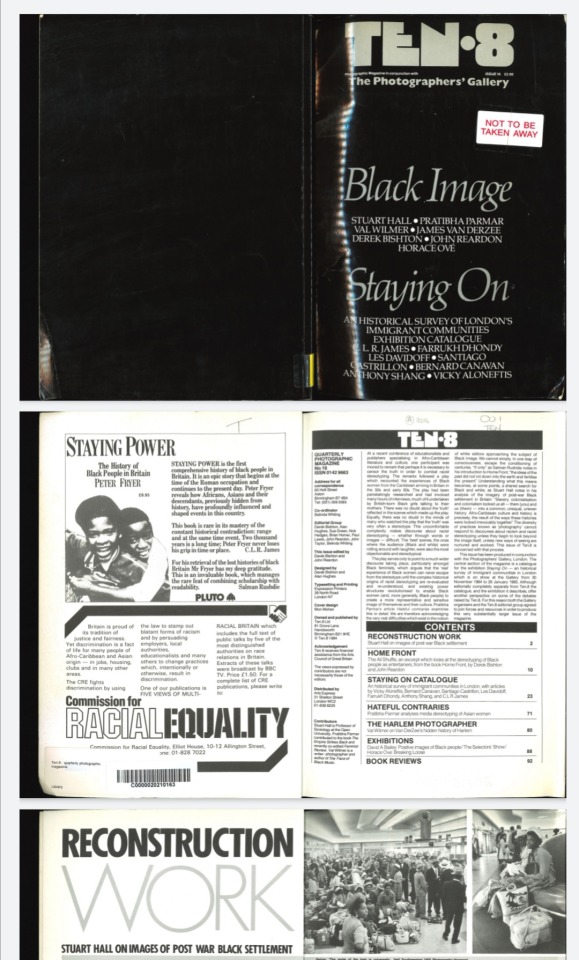
I spent the rest of the week at the centre in the Manchester Central library and scanned copies of magazines I had been looking for online. A special issue of Ten.8 focuses on race, immigration, and photography. Articles in ArtRage of Black and Asian artists and critics carving out their own spaces in the British art scene. It felt wonderful to be in a library that housed all these texts and journals that I couldn’t find in Denmark. Whenever I work at intuitions in the UK I often wonder how different my journey would have been. How would it have helped my project? How would it have helped me emotionally? Maybe it is the intense feeling of isolation in Denmark that makes me think about how my work fits in in the UK. How I fit in in the UK. There is something in this story about the archives we travel with. The histories we have recorded and come face to face with again in a different time, under different circumstances. It all sounds a bit too much like a Paulo Coelho novel. To be perfectly honest this is a story about contacting the institute you are visiting to help assess how long someone needs to spend there.
As for Akeem, I decided to come clean. My work laptop wouldn’t allow me to connect to the WIFI so I had to work from Starbucks. I couldn’t keep up the façade.
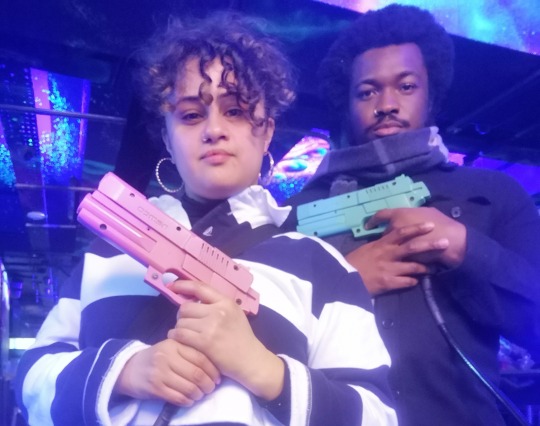
0 notes
Text
London Metropolitan Archives
I am now back in Copenhagen after my two-week archive visit. On my first day at the London Metropolitan Archives, I arrived as they opened and was instructed to place all the items I needed into a clear plastic bag. The rest of my belongings would be kept in a locker on the mezzanine floor. I placed my laptop, notebook, pencil, and forms of identification into my plastic bag and continued upstairs. A member of staff registered me into the system and created a history card. This would be my personal identification at the archive and would allow me to request items from their catalogue.
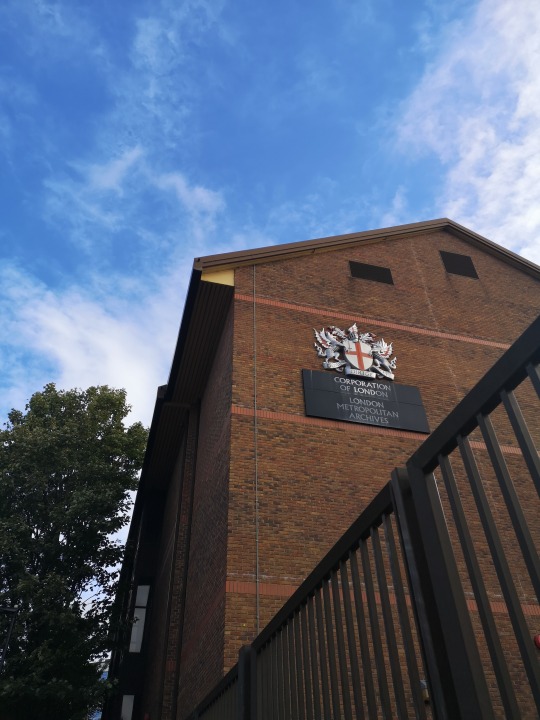
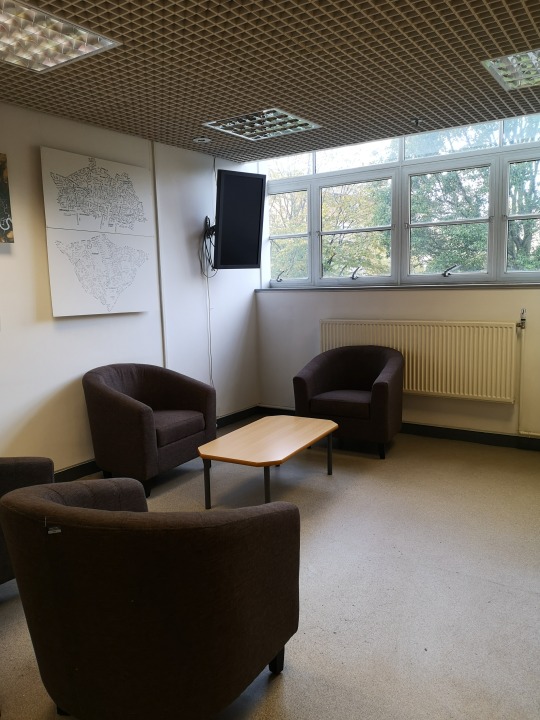
Once settled, I began to look up the items I had already bookmarked for myself in Denmark. I requested 8 items, unsure of how much time this would take up. I would need to wait an hour for the items to appear in the reading room next door. That evening I described the setting to my sister as a historic Argos.
When I returned from my coffee break I began my search through the material. I was surprised to see how thin the folders were. The Anti-Racist Programme Sub Committee only contained lists of documents and no actual minutes or decisions from meetings. The only piece of information that seemed relevant to my project was the decision made on 4thJune 1984 to not use the council's advertising agency for the London Against Racism campaign.
In the second folder, I found information stating that The Year of Anti-Racism advertising should be aimed at boroughs that have not participated in the campaign. Again, a statement is made that any adverts should not be created by the council's advertising agency. The material should be created by the designer's working group.
A memo dated the 30th January 1984 suggests that offices investigate possible methods of making the anti-racist year posters less susceptible to graffiti. The fourth folder by the subcommittee included a report regarding banners made for the anti-racism year by Banner Arts. It included the design requirements and specified that Banner Arts provide work for ethnic minority artists at all stages of the creative design.
Unfortunately, there seemed to be no information regarding the explicit details of the creation of the posters for the general campaigns or The Year of Anti-Racism. I was told that most of the documents regarding the ethnic minority’s subcommittee are held off-site and that I would need to order that through a generic email address. I was also informed that this process is much longer, and due to covid restrictions, the van that collects the material only operates once a week.

I read through the minutes of the GLC available in the main library and found very little regarding race and public relations. I read through the 1984 catalogue which was the Year of Anti-Racism but there appeared to be no comment or reflection on the activities and material created. I tried 1983 and found only some brief remarks on the upcoming year. This may be because the details and information exist within the subcommittee documents that are held off-site and will need to wait until I can see them.
The following day I returned and requested to see the folders containing the posters and campaign material. They included original posters from 1984, some that I had seen before online and some I had not. There were photomontages from displays that were exhibited as part of the Rally against Racism campaign. There were some design briefs for the logo, ideas should be “bold and not too obscure”. The brief states that there should be no “hands, faces, heads, doves, rainbows”. The examples that were included in the folder show different attempts at creating the logo. Jigsaw pieces of different shading, a rope that has been braided, a weighing scale with one side white and the other black. Whilst not linked directly to my research it does link to a question that appears in my PhD proposal that is, what kind of symbols and icons do we use when trying to portray anti-racism? The scales of justice, balance, and equality. The meeting of white and black hands, arms, bodies. A particularly funny example in the folder was a bottle of poison with the word racism.


Unfortunately, there was no information behind the brief to understand why some symbols should not be used. Did they feel too cliché? Overused? To explicitly tell people not to use certain symbols suggests one would already know the symbols that would come up as people thought about anti-racism. In the end, they chose the logo of the London skyline which appeared on posters, badges, and other forms of publicity material. When I returned home that evening, I put in a request for the material that was kept off-site. Again I wasn’t too sure what I would find but I asked to look at folders from the Ethnic Minority Unit. The archivist who responded to my request told me it would take 5 days to be delivered.
Researching in the archive is fast work and is somewhat demanding on your body. Or maybe that is just my body that needs to be hydrated and hates the cold. I was there for a short time and needed to find something rather specific that may not have been documented, rather said in passing, a conversation between colleagues that was then reiterated to the advertising agency. The archives are not open all day; four hours is your window of opportunity. I would eat my lunch at 11am so that I wouldn’t need to leave the archive and ensure I got through all the material. Some days this was manageable as I would pick up a sandwich from Pret. However, there is an incredible street food market by the archive selling gyros and freshly made pasta. I found a Ghanaian stall selling jollof rice and meat stew. That stew compromised my research. I ate it with such pleasure and then tried not to fall asleep in the archive as the food continued to warm my stomach.

To know me is to know that I cannot be more than 5 meters away from my beloved water canister. I love water. I love to be quenched. I once took my partner on a mission across London to retrieve my water canister from the BFI after I forgot it in one of the screens. At the archive, I had to lock my water bottle in the cloakroom and instantly my mouth became dry. I limited myself to one water break every hour. I felt as shrivelled as the documents I was looking at.
The archives were unbearably cold, but I wanted to sit by the window to get the best light for the photographs. I shivered as I flipped through the pages with speed. My eyes moving quickly over the page, a decision needed to be made in a second whether the document was worth a closer inspection. I took lots of photographs and some notes whilst I time travelled in the absolute chaos that was the 1980s.
0 notes
Text
Departures
I am currently travelling to London to visit two archives, The London Metropolitan Archives, and The Black Cultural Archives. These archives house documents and materials related to the two organisations, Greater London Council and The Commission for Racial Equality. At this exact moment, I am sitting next to my partner on a British Airways flight to London. I am not the type to write at a whim yet as someone who is truly terrified of flying, I find myself needing the distraction after a particularly bumpy taxi.
Besides working at the Vogue Archives and the V&A archives this will be the first time I attend an archive with a personal agenda, with a personal sense of intrigue and inquiry. I am unsure as to what I will find but I have a vague idea of what questions I would like to answer. At what point did these organisations feel the need the communicate ideas such as anti-racism to the public? How did they decide on the iconography and visuals? How soon after such decisions did they decide to bring in advertising agency Saatchi & Saatchi? How did they define the term anti-racism? Municipal anti-racism?
Reading the work of scholars and activists that came before me, that cleared the ground back in the 70s and 80s I feel so proud and yet disconnected from the tradition and legacy. I am also trying to find out where I fit in this conversation as someone who comes from a different colonial history and whose parents arrived in the UK just as the work on anti-racism had begun on a municipal level.
I wonder what the material will look like, how will it be presented to me? I sheepishly asked the archivist if two weeks felt like enough time to get through the material. “It depends on what you need really, but two weeks sounds about right.” I read through the rules sent to me, making sure to take notes on what I could take in and how I would go about recording the material. What would the room look like? Would there be other researchers keen to have a chat after almost two years of social isolation?
A few days prior I spoke with my supervisor, and I asked if she had any advice on an archival visit. Again, the question felt clumsy. She reassured me that it is difficult to know until one is in front of the material, but that I should try and remain focused on the task at hand. “It can be difficult to know when to stop looking, you always think the perfect piece is in the next box, but when time is tight it is often the case that you need to stop.” She told me of past students who had visited the archives of artists and had lost themselves in the love letters and notes. The sense of always being behind your schedule whilst doing a Ph.D. is overwhelming. I took her advice seriously.
This visit itself was organised rather late. During my first year, I was adamant I didn’t need to go to an archive. I didn’t think it was important to understand the intentionality behind these images. I felt that I knew what they were trying to achieve. More than that I felt that my research questions were focused on the images themselves. I wanted to give them agency beyond what the organisations and the advertising agency wanted. I wanted to interrogate the images as individuals and ask them what they thought they were doing. Looking back this may have been a stubborn position to take or one that would not yield enough work to justify a Ph.D. qualification. I kept saying to colleagues that I am not a historian.
I had finished reading Saadiya Hartman’s book Lose Your Mother before returning to Copenhagen. I had also read Wayward Lives Beautiful Experiments before even applying for the Ph.D. A book so profound and moving that I had to stop reading and return to a year after I began. What I loved so much about Lose Your Mother was her sense of frustration and how clearly she articulated it. The landscape became her archive as she scanned various locations in Ghana that represented the trauma and pain from the Transatlantic slave trade. She made the archive into what she wanted, blending personal stories with historical findings, and was honest when she came across dead ends. After a truly miserable summer of covid infections and isolation, this book brought me back to life. I have not stopped gushing about it. I am not sure exactly how much this book had an impact on my position regarding an archival visit but it gave me the optimism to embrace the sometimes negative and frustrated feelings.
We have begun our descent into London Heathrow, my partner and I pointing out the different parts of the city. Stratford, The O2 arena, The Royal Albert Hall. I begin my work on Monday and am filled with a mix of excitement and intrigue. Well, I am actually filled with anxiety, landing brings me no tranquillity. I am hoping to document my trip and write some more reflexive pieces like this one. For now, I wait for the bump of the wheels on the tarmac to truly feel relaxed and safe. I begin work on Monday.

0 notes